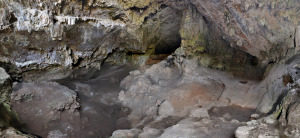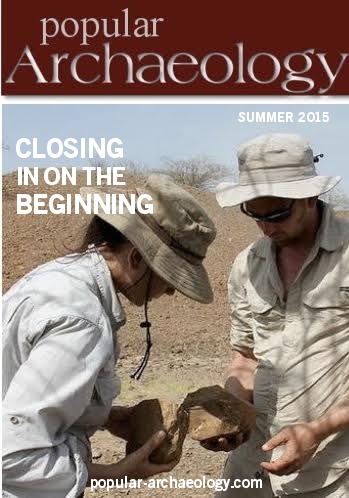
An international team of researchers has sequenced the first complete genome of an Iberian farmer, which is also the first sequenced ancient genome from the entire Mediterranean area. This new genome sequencing opens a window on understanding the distinctive genetic changes that map Neolithic migration in Southern Europe, which possibly led to the abandonment of the hunter-gatherer way of life. The study is led by the Institute of Evolutionary Biology, a joint center of the Spanish National Research Council (CSIC) and the Universitat Pompeu Fabra (Barcelona, Spain), in collaboration with the Centre for GeoGenetics in Denmark. The results are published in the Molecular Biology and Evolution journal.
A prevailing theory suggests that the first farmers entering Europe about 8,000 years ago coming from the Near East spread through the continent following two different routes: one to Central Europe via the Danube, and the other toward the Iberian peninsula following the Mediterranean coast. These latter farmers developed their own cultural tradition: the Cardium Pottery, so-called due to a characteristic incised decoration made with the edges of bivalves shells belonging to the genus Cerastoderma (formerly Cardium).
So far, only genomic data of various individuals belonging to the inland route found in Hungary and Germany have been available, but complete genomes from individuals of the Mediterranean route have been missing. This is partly due to the climatic conditions in Southern Europe, which hinder the conservation of genetic material.
The research team, led by Carles Lalueza-Fox from the Institute of Evolutionary Biology, has sequenced the complete genome of a Neolithic woman from a tooth dated to 7400 years ago, recovered from the cardial levels of the Cova Bonica cave in Vallirana, near Barcelona.This site is being excavated by a team from the University of Barcelona, led by Joan Daura, Montserrat Sanz, Mireia Pedro, Xavier Oms and Pablo Martinez. In addition, they have recovered partial genomic data from three other sites: Cova de l’Or (Alicante) and Cova de la Sarsa (Valencia) in Spain, and Almonda (Portugal).
____________________________________________
The cave named Cova Bonica, in Vallirana (Barcelona, Spain), where the remains were found. Courtesy Joan Daura/ Montserrat Sanz
____________________________________________
Thanks to this newly sequenced genome, researchers have been able to determine that farmers from both the Mediterranean and inland routes are very homogeneous and clearly derive from a common ancestral population that, most likely, were the first farmers who entered Europe through Anatolia.
According to Iñigo Olalde, first author of the paper, “the sequencing of this genome has been possible thanks to new advances in both techniques of ancient DNA extraction, building of and construction techniques of genomic libraries, and massive sequencing; from an experimental point of view, it has been quite challenging”.
Analysis of the genome from Cova Bonica has made it possible to determine the appearance of these pioneer farmers, who had light skin and dark eyes and hair. This contrasts with previous Mesolithic hunters who, as the man from La Braña in León (Spain)—recovered in 2014 by the same research team—has demonstrated, had blue eyes and a darker skin than current Europeans. Both individuals are only separated by 600 years and 800 kilometers; however, they are very different from a genetic and physical standpoint. Modern Iberians mostly derive from these farmers, with Sardinians and Basques preserving the farming genetic component to the largest extent.
For Carles Lalueza-Fox, “this study is only the first step of a major project done in collaboration with David Reich at the Broad Institute that aims to create an Iberian paleogenomic transect, from the Mesolithic to the Middle Ages. So far, we have genomic data from fifty individuals and we want to reach more than one hundred. Being at the westernmost edge of Europe, the Iberian Peninsula is crucial to understanding the final impact of population movements such as the Neolithic or the later steppe migrations that entered Europe from the East.”
_______________________________________________________
Source: Adapted and edited from the subject Spanish National Research Coucil press release.
_______________________________________________________
 Read more in-depth articles about archaeology with a premium subscription to Popular Archaeology Magazine.
Read more in-depth articles about archaeology with a premium subscription to Popular Archaeology Magazine.
In addition, the latest Popular Archaeology ebook is now available.
______________________________________________
Travel and learn with Far Horizons.
____________________________________________
 This richly illustrated ebook version of a recent Popular Archaeology issue includes the following stories: The discovery of the tomb of a previously unknown pharaoh that is shedding light on a lost ancient Egyptian dynasty; how genetics is revolutionizing what we know about human evolution and our prehistoric past; one scholar’s controversial ‘New Chronology’ and how it supports the historicity of the biblical Exodus; how archaeologists are unearthing new history in Williamsburg, Virginia, a seat of British colonial power in 18th century America; the discovery of the remains of a major Roman legionary base in Israel; the unearthing of an ancient Judean fortified settlement in the borderlands between the biblical kingdoms of ancient Judah and the Philistines; and how archaeologists are uncovering evidence of what may have been an important administrative center of Judah during the 8th century BCE. Now available from Amazon.com!
This richly illustrated ebook version of a recent Popular Archaeology issue includes the following stories: The discovery of the tomb of a previously unknown pharaoh that is shedding light on a lost ancient Egyptian dynasty; how genetics is revolutionizing what we know about human evolution and our prehistoric past; one scholar’s controversial ‘New Chronology’ and how it supports the historicity of the biblical Exodus; how archaeologists are unearthing new history in Williamsburg, Virginia, a seat of British colonial power in 18th century America; the discovery of the remains of a major Roman legionary base in Israel; the unearthing of an ancient Judean fortified settlement in the borderlands between the biblical kingdoms of ancient Judah and the Philistines; and how archaeologists are uncovering evidence of what may have been an important administrative center of Judah during the 8th century BCE. Now available from Amazon.com!
____________________________________________








